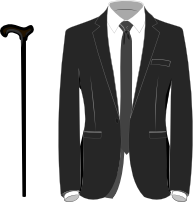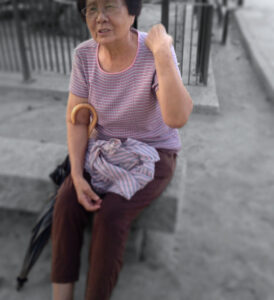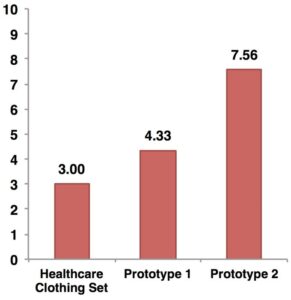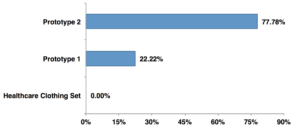
Senior Clothing Solutions
National Cheng Kung University
Human Factors UX
Tainan, Taiwan
Introduction
Master’s Thesis | Human Factors UX
I sought to uncover and address challenges that elderly populations faced when putting on and wearing clothing.
Throughout this research, I worked closely with the elderly in homes, hospitals, and senior living centers. I engaged in user interviews, measured limb movements, obtained input from medical professionals, and developed prototypes.
At present, many clothing options do not address the ergonomic and psychological needs of senior populations. I aimed to understand what these needs were and how they could be filled in ways that supported higher qualities of life.
*The following is a brief overview of the project. Please feel free to contact me if you are interested in the complete study.
Objectives
- Understand aspects of un-aided dressing that remain difficult for the elderly
- Determine appearances that are most preferable
- Develop solutions that measurably confront objectives 1 & 2 that can promote an overall higher quality of life among the elderly.
Challenges
- Language barriers
- Scheduling with caretakers
- Finding willing participants
- Gaining approval from healthcare facilities for observation
Outcome
This research demonstrated that modified designs can support improved elderly independence by offering easier-to-use clothing systems. Further, it revealed the importance of designing with psychological considerations in mind, given that the appearance of clothing can play a crucial role in the mental health of the wearer. Results of proposed designs were positive. Reinforcing the value of elderly input during development.
It became clear that preferences for new fastening systems were voiced not only in the final prototype test, but also among preliminary testing and field research. When observing confidence levels revealed in the final prototype test, the final prototype constructed, a result of collaborative influence, showed significant promise.
Priorities were revealed to be more centered on comfort than on speed. This revelation has enabled a more refined definition of convenience for different age groups. It will therefore influence proper approaches toward the development of more complete, appropriate elderly clothing designs.
Thesis title: Promoting Independence and Higher Quality of Life among the Aged through Elderly-Centric Clothing Design Presented at: IASDR conference, Brisbane
Methodologies
Morphological Analysis – to reveal potential solutions, given a set of multidimensional challenges
Exploratory Field Research & User Interviews – to promote contextual comprehension
Heuristic Evaluation – to analyze the impact of clothing characteristics
Brainstorming – to generate ideas
A/B Testing – to compare preferences
Usability Testing – to observe differences between garments in a natural environment
Focus Groups – to gain inferences via discussion among end users and among designers regarding clothing
T-tests & Pearson Correlation Coefficient – to determine statistical significance

Framework of Research

Prototype Development
Based on responses from an exploratory field survey, two sets of prototypes were developed that were accordant with preferences observed among the elderly and lay within the scope of the morphological field. Desires for wider openings and easier to manipulate closures were taken into account.
The first set was designed from a utility-toward-fashion perspective. Existing healthcare garments were referenced. Areas of convenience were preserved then combined with stylistic and preferential sentiments received from the field study.
The second set, in contrast to the first, was designed from a fashion-toward-utility perspective. The intent was to start with acceptably fashionable apparel and find opportunities for functional improvement and ease. Designs for both prototype sets were drafted based on the previously-mentioned research questions entailing ease of use, geriatric psychological well-being and cultural consideration.

Response to New Designs
Once both prototypes were completed, a group of nine participants was selected from the target demographic to review the new designs and provide qualitative feedback. There were opportunities to review the garments in detail and test the various new constructs.
The first prototype had a moderately positive reception. The larger buttons were viewed to be more convenient and easier to grasp. Unlike some popular hospital garment styles that open on the side, this design had a front opening. The front opening was viewed to be less complex and therefore favored. Suggestions for improvement included reducing the number of buttons and making the garments appear less institutional. Drawstrings in general were thought to be more tedious. It was therefore suggested that loose elastic or other fastening measures be considered for the trouser waist.
The second prototype was well received. When first presented, participants did not realize press buttons were used on the shirt, having assumed the faux flat-button front was genuine. Upon discovery of hidden press buttons, positive feelings were expressed. Reviewers made comments such as, “This is wonderful” and “I especially like the other buttons on the front.” It was mentioned that this construction provided good appearance with utility. Press buttons were viewed with favor for shirt application. The extra-large press buttons enabled closure without detailed hand movement. Additionally, it was notably preferred to Velcro, as the press button did not snag or catch on other areas of the garment.


The second set of trousers was received more positively than the first. Concepts of side openings and a button fly were generally liked. However, the fastening systems were targeted for improvement. Users suggested that Velcro should be applied in the fly. It was felt that a Velcro fly would be easier to operate and require less movement than either a button or zipper fly.
One suggestion was to make the Velcro weaker and cover a greater area, enabling easier fastening. Given the mixed reactions on side closures, further investigation is warranted until a more widely-favorable option is developed.
Participants rated design appearance on a 10-point Likert scale, with 1 representing a completely unattractive clothing set and 10 representing a completely attractive set. Three sets were presented: an existing healthcare clothing set, the first prototype set and the second prototype set. To reduce bias, no mention of prototype designation or existing design status was offered to participants. Prototype 1 showed a 44.4 percent improvement over the existing garment. Prototype 2 received the highest scores, revealing a 151.9 percent improvement over the existing garment and a 74.4 percent improvement over Prototype 2.
Psychological impacts were positive for both prototypes. Reviewers stated highest levels of personal satisfaction and confidence when referring to both prototypes 1 and 2, during a comparison of the three clothing sets. Prototype 2 was viewed to be the most classical in appearance and most supportive of self-confidence. Personal satisfaction and confidence have been shown to be integral factors that promote high qualities of life. Therefore, it is posited that advancements in clothing solutions, including those listed in this study, can contribute to an overall improvement in quality of life among senior populations.
TOOLS
- Excel
- MS Word & PowerPoint
- Google Slides & Forms
- Bosch App
- G Forms App
- Video Camera
- Sewing Machine
- SPSS
- Adobe CS
TEAM
- Advising Professors
- Human Factors Graduate Researcher (Me)
- Co-designers
PERSONAL CONTRIBUTION
- Identification of Subject Matter
- Secondary Research Review
- Development of research framework
- Design & execution of research methodologies
- Data Recording, Analysis, & Visualization
- Prototype Design & testing





